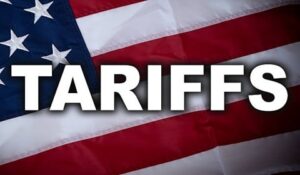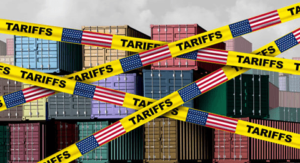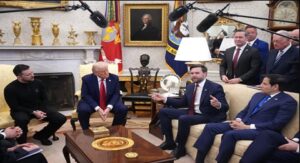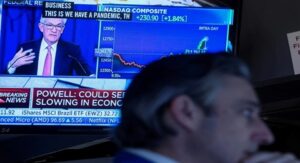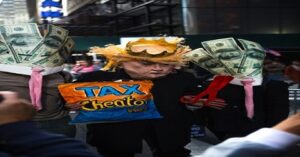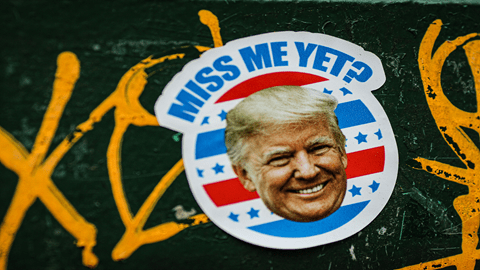
The Economic Consequences of Trump’s Second Administration
Economic consequences of Trump’s second administration could shape the U.S. economy in profound ways, but not necessarily for the better. His proposed tax cuts, largely benefiting the wealthy, risk overheating the economy amidst already high inflation and tight monetary policies.
Larger deficits may keep interest rates elevated, hurting exporters and exacerbating fiscal instability. On trade, his tariff strategies may incite retaliation and disrupt global markets, while political grandstanding on immigration could overshadow practical solutions. Although Trump inherits a robust economy, his populist rhetoric masks policies likely to widen inequality, burden everyday Americans, and erode public services.
The question remains: will these policies secure lasting gains or spark economic turbulence?
Economic Consequences of Trump 2.0
The second administration of US President-elect Donald Trump, set to commence on January 20, 2025, promises to revisit many of the policies from his first term. However, altered economic conditions and global realities present significant challenges to his agenda. Below are seven key aspects of Trump’s likely governance, analyzing their potential impacts.
Table of Contents
1. Tax Cuts and Economic Stimulus
Trump’s hallmark economic policy, tax cuts, is expected to make a return. However, the context is vastly different from his first term. Back in 2016, the US economy was marked by low inflation and near-zero interest rates, providing fertile ground for fiscal stimulus. In contrast, today’s economy grapples with elevated inflation and high interest rates, partly a legacy of the COVID-19 pandemic.
The economic consequences of Trump’s tax cuts, particularly those skewed toward the wealthy, could risk overheating an already low-unemployment economy. This could force the Federal Reserve to tighten monetary policy further, potentially leading to a stronger dollar that hampers US exports. The fiscal deficit is also likely to widen, compromising long-term fiscal sustainability and reducing the government’s ability to invest in public services or infrastructure.
Read More: Ukraine War Threatens Russia’s Regional Influence
2. Tariffs
A cornerstone of Trump’s trade policy has been imposing tariffs to reshape US trade relationships. While this rhetoric may resonate with his base, the practical outcomes are likely to be limited. During his first term, high-profile tariffs often led to retaliatory measures and special-interest lobbying, resulting in numerous carve-outs and exceptions.
This cycle is expected to repeat. The economic consequences of Trump’s trade policies, particularly his tariffs, may include increased costs for American businesses and consumers, as well as disruption of global supply chains. Trump’s tariffs may generate headlines but are unlikely to lead to substantial trade restructuring. Moreover, broad-based tariff hikes could spark retaliation from trading partners, further complicating the economic situation.
Read More: Trump’s Economic Agenda and Challenges
3. Immigration
Immigration remains a polarizing issue central to Trump’s political narrative. His promises to deport millions of undocumented immigrants and build a border wall reflect his appeal to anti-immigration sentiment. Yet, the practical implications are more nuanced.
Mass deportations would disrupt key industries like agriculture and construction that rely on immigrant labor, risking economic instability. The economic consequences of Trump’s policies are far-reaching, with potential ripple effects on sectors dependent on immigrant workers, labor costs, and productivity.
Instead, Trump may focus on punitive measures against countries perceived as sources of illegal immigration, such as imposing tariffs on Mexico or Canada. Relaxing sanctions on Venezuela could also serve dual purposes: reducing migration pressures while increasing global oil supplies to counter Iran and Russia.
4. Federal Reserve and Monetary Policy
Trump’s friction with the Federal Reserve is likely to persist, especially given his tendency to view monetary policy through a political lens. While he may contemplate replacing Fed Chair Jerome Powell, doing so would risk market instability, higher long-term interest rates, and inflationary pressures. The economic consequences of Trump’s policies, particularly his focus on fiscal stimulus through tax cuts, could force the Fed to maintain tight policies, creating a challenging dynamic between fiscal and monetary authorities. Ultimately, the Fed’s independence will likely constrain Trump’s ability to manipulate monetary policy.
Read More: China’s Pension Crisis, A New Challenge
5. Foreign Policy
Trump’s foreign policy approach—transactional and focused on perceived “better deals”—is expected to remain unchanged. High-profile threats, such as withdrawing from NATO or purchasing Greenland, will likely be rhetorical flourishes rather than actionable policies.
In practical terms, Trump’s foreign policy may revolve around renegotiating trade agreements, as he did with the USMCA, and prioritizing deals that serve domestic political objectives. The economic consequences of Trump’s approach, particularly in terms of trade imbalances and tariffs, could continue to reverberate in global markets. His stance on China and Iran will likely continue to be confrontational but tempered by economic and strategic realities.
6. Domestic Jobs and Populist Promises
Central to Trump’s appeal is his promise to create good jobs and reduce the cost of living. However, his policies are unlikely to deliver meaningful improvements for most Americans, particularly less-educated workers. The economic consequences of Trump’s approach, including deregulation and tax cuts, may benefit wealthy individuals and corporations but could exacerbate inequality and undermine public services.
Moreover, trade policies designed to protect American jobs often backfire, as retaliatory measures and higher input costs harm domestic industries. The broader economic environment—characterized by automation and global competition—further complicates job creation in traditional sectors.
Read More: Can India Become a Developed Economy by Mid-Century?
7. Geopolitical Shifts and Strategic Implications
Trump’s second term coincides with a rapidly evolving global order. While his rhetoric against China and Russia remains bellicose, the practical implications of these positions are uncertain. For instance, Russia’s dependence on China due to its war in Ukraine creates opportunities and risks for US foreign policy.
Trump’s promises to reduce foreign interventions may find resonance with war-weary voters but could inadvertently strengthen adversaries. The economic consequences of Trump’s policies, particularly in trade and international relations, could exacerbate tensions and disrupt global markets.
His reluctance to support Ukraine against Russian aggression risks ceding strategic ground to a China-Russia axis. The implications for NATO and US allies are similarly concerning, as reduced American engagement could destabilize existing security arrangements.
Bottom Line
Donald Trump’s second administration is poised to repeat many of the themes from his first term, albeit in a different economic and geopolitical context. While his rhetoric promises transformative change, the realities of governance are likely to temper expectations.
Tax cuts, tariffs, and immigration policies will generate headlines but face significant practical limitations. Similarly, his transactional foreign policy approach may yield modest adjustments rather than sweeping changes. The economic consequences of Trump’s policies, particularly his focus on protectionism and deregulation, are likely to have long-lasting effects on American industries, trade relationships, and fiscal stability.
For the average American, the promised economic benefits may remain elusive, overshadowed by rising inequality and fiscal challenges. As Trump embarks on his second term, the disconnect between populist promises and policy outcomes will define his presidency. Whether this dynamic sustains his political appeal or exposes its limitations remains an open question.
